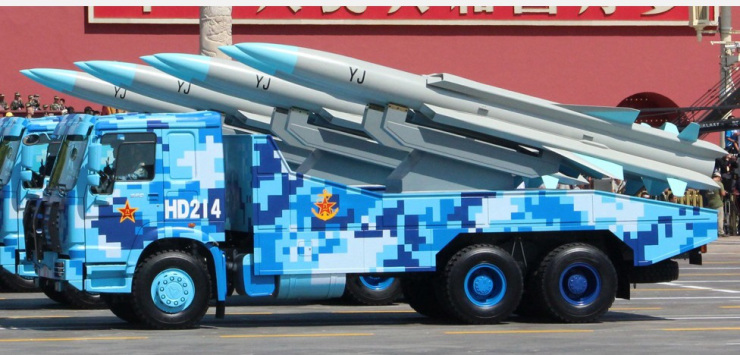It is a weapon technology that the US military still struggles to induct into its arsenal. But the Pakistan Air Force (PAF) claims to have it. In a week when PAF has boasted of striking Iran within its territory, the force is claiming to have hypersonic missiles capable of flying at least speeds of Mach 5 with high maneuverability.
Hypersonic missiles are boosted by high-powered, air-breathing engines. The ability to launch highly maneuverable weapons at hypersonic speeds gives an advantage to any country as it can evade any air defense system currently in use. Thus, the claim is an intriguing one, as Pakistan has been struggling with mounting debt.
PAF claimed this week that its warfighting capabilities had been given an impetus by the induction of new technology like hypersonic missiles.
Indian Air Force Expert, speaking on condition of anonymity, said that claims of a missile being ‘hypersonic’ can be “misleading,” as almost all ballistic missiles attain hypersonic speeds at some point during their flight.
Underscoring its prowess because of “a transformative modernization initiative,” PAF said in a statement: “The acquisition of J-10C fighter jets, Unmanned Aerial Systems, modern electronic warfare platforms, force multipliers, state-of-the-art integrated air defense systems, air mobility platforms, High to medium air defense (HIMAD) and hypersonic missile capabilities at an unprecedented pace has bolstered the PAF’s warfighting capabilities.”
The claim has come at a time when PAF was caught napping, and the Iranian ballistic missiles entered its air space undetected and uninterrupted to hit targets on Pakistani soil.
This was similar to the incident when India’s indigenously built supersonic cruise missile BrahMos was accidentally fired and landed in an unpopulated area of Pakistan. The missile, often touted as Indian ‘BrahMastra’ (the ultimate celestial weapon), managed to evade Pakistani radars. Pakistan claimed it tracked the launch of a “supersonic projectile” from Sirsa, an air force base in North India. But despite the claimed tracking, Pakistan could not intercept the missile.
Before that, on February 26, 2019, 16 Mirage fighter jets of the Indian Air Force (IAF) crossed the border between the two nuclear-armed countries at 30,000 feet and struck at the Jaish-e-Mohammed camp in Balakot. The Indian fighter jets then headed home and landed back unscathed and unopposed.
So, PAF’s claim is seen as a boast. While it is plausible that China, embroiled in intermittent military clashes with India, could provide Pakistan with the high-tech weapons to keep up the pressure on their common foe.
Timothy Wright, a military analyst at the International Institute for Strategic Studies think tank, told Defense News the hypersonic missile referred to by Pakistan was likely to be a CM-400AKG (YJ-12), which the country acquired five years ago for its JF-17 Thunder jets. The service’s release included a video featuring the CM-400AKG missile.

The CM-400AKG reportedly can maneuver in its final seconds of flight, helping it to dodge enemy defenses. It tops out at five times the speed of sound, media reports claim.
A claim that defense experts take with a pinch of salt. “According to the missile’s manufacturer (Aviation Industry Corporation of China), the CM-400AKG can travel at hypersonic (Mach 5-plus) speeds,” he told Defense News. “However, there has not been an independent assessment of this claim.” Pakistan purchased 60 CM-400AKGs at a total cost of $100 million. The acquisition transformed the country’s JF-17s into potent ship-killers.
The CM-400AKG is, undoubtedly, Pakistan’s main tool for undermining India’s air defenses and is made in China. It is primarily an anti-ship missile. The stated range of this missile is between 100 and 240 kilometers. Also, unlike other anti-ship missiles, it follows a high ballistic flight path.
Are Hypersonic Missiles Invincible?
Hypersonic missiles might not be the ultimate invincible weapon, as China and Russia boast. At least, the US defense establishment appears to believe so.
Hypersonic missiles are the new lethal weapons in the arsenal of Russia and China to project their power. The Ukraine-Russia war, however, has busted through the myth propagated by Russia that hypersonic missiles are invincible.
The Russian hypersonic long-range Kh-47 Kinzhal missile or ‘Dagger’ has long evoked fear and admiration among the country’s adversaries. The fear factor was matched by the surprise and jubilation that followed the alleged downing of the Kinzhal by the recently supplied Patriot air defense system in May 2023.
China has also war-gamed to destroy a US aircraft carrier group with its latest long-ranging hypersonic ballistic missile, DongFeng-27, to signal the arrival of its “Blue Dragon” strategy in the Indo-Pacific.
Beijing has been quite boastful of its hypersonic weapons program and has already been deploying them to deny area access to the US. However, the US hypersonic weapons programs are trailing owing to a lack of a plan, technological gaps, and a belief that ballistic missiles are a better and cost-effective bet against an adversary.
The US Army, Navy, and Air Force have their own non-nuclear hypersonic missile development program to develop weapons that fly five times faster than the speed of sound and spend most of their flight in the Earth’s atmosphere.
India is also working on hypersonic technology and has created a wind tunnel for testing in Hyderabad. It carried out the first successful test of a fully indigenous hypersonic technology demonstrator vehicle powered by an air-breathing scramjet engine. The Indian Ministry of Defense announced it on September 7, 2020.
India is also developing the hypersonic BrahMos II missile.
- Ritu Sharma has been a journalist for over a decade, writing on defense, foreign affairs, and nuclear technology.
- She can be reached at ritu.sharma (at) mail.com
- Follow EurAsian Times on Google News